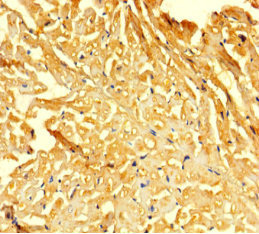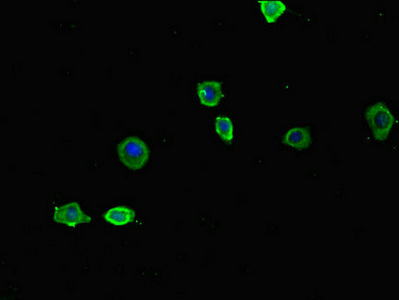Full Product Name
Rabbit anti-Homo sapiens (Human) FOXG1 Polyclonal antibody
Alternative Names
BF-1 antibody; BF-2 antibody; BF1 antibody; BF2 antibody; Brain factor 1 antibody; Brain factor 2 antibody; FHKL antibody; FKH2 antibody; FKHL1 antibody; FKHL2 antibody; FKHL3 antibody; FKHL4 antibody; Forkhead box protein G1 antibody; Forkhead box protein G1A antibody; Forkhead box protein G1B antibody; Forkhead box protein G1C antibody; Forkhead like 1 antibody; Forkhead like 2 antibody; Forkhead like 3 antibody; Forkhead like 4 antibody; Forkhead-related protein FKHL1 antibody; Forkhead-related protein FKHL2 antibody; Forkhead-related protein FKHL3 antibody; FOXG1 antibody; FOXG1_HUMAN antibody; FOXG1A antibody; FOXG1B antibody; FOXG1C antibody; HBF 1 antibody; HBF G2 antibody; hBF-2 antibody; HBF2 antibody; HFK1 antibody; HFK2 antibody; HFK3 antibody; KHL2 antibody; Oncogene QIN antibody; QIN antibody
Immunogen
Recombinant Human Forkhead box protein G1 protein (183-292AA)
Immunogen Species
Homo sapiens (Human)
Conjugate
Non-conjugated
The FOXG1 Antibody (Product code: CSB-PA008815HA01HU) is Non-conjugated. For FOXG1 Antibody with conjugates, please check the following table.
Available Conjugates
| Conjugate |
Product Code |
Product Name |
Application |
| HRP |
CSB-PA008815HB01HU |
FOXG1 Antibody, HRP conjugated |
ELISA |
| FITC |
CSB-PA008815HC01HU |
FOXG1 Antibody, FITC conjugated |
|
| Biotin |
CSB-PA008815HD01HU |
FOXG1 Antibody, Biotin conjugated |
ELISA |
Purification Method
>95%, Protein G purified
Concentration
It differs from different batches. Please contact us to confirm it.
Buffer
Preservative: 0.03% Proclin 300
Constituents: 50% Glycerol, 0.01M PBS, PH 7.4
Tested Applications
ELISA, IHC, IF
Recommended Dilution
| Application |
Recommended Dilution |
| IHC |
1:20-1:200 |
| IF |
1:50-1:200 |
Storage
Upon receipt, store at -20°C or -80°C. Avoid repeated freeze.
Lead Time
Basically, we can dispatch the products out in 1-3 working days after receiving your orders. Delivery time maybe differs from different purchasing way or location, please kindly consult your local distributors for specific delivery time.
Usage
For Research Use Only. Not for use in diagnostic or therapeutic procedures.






